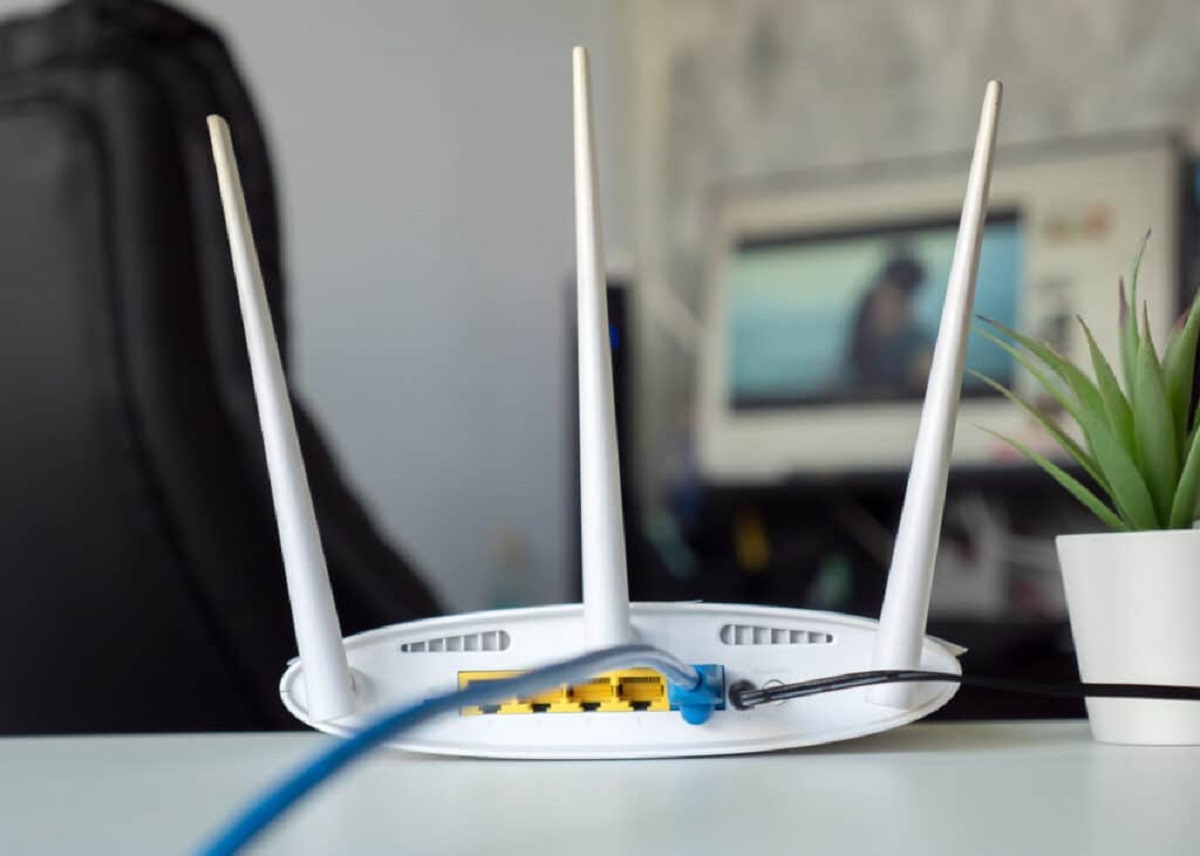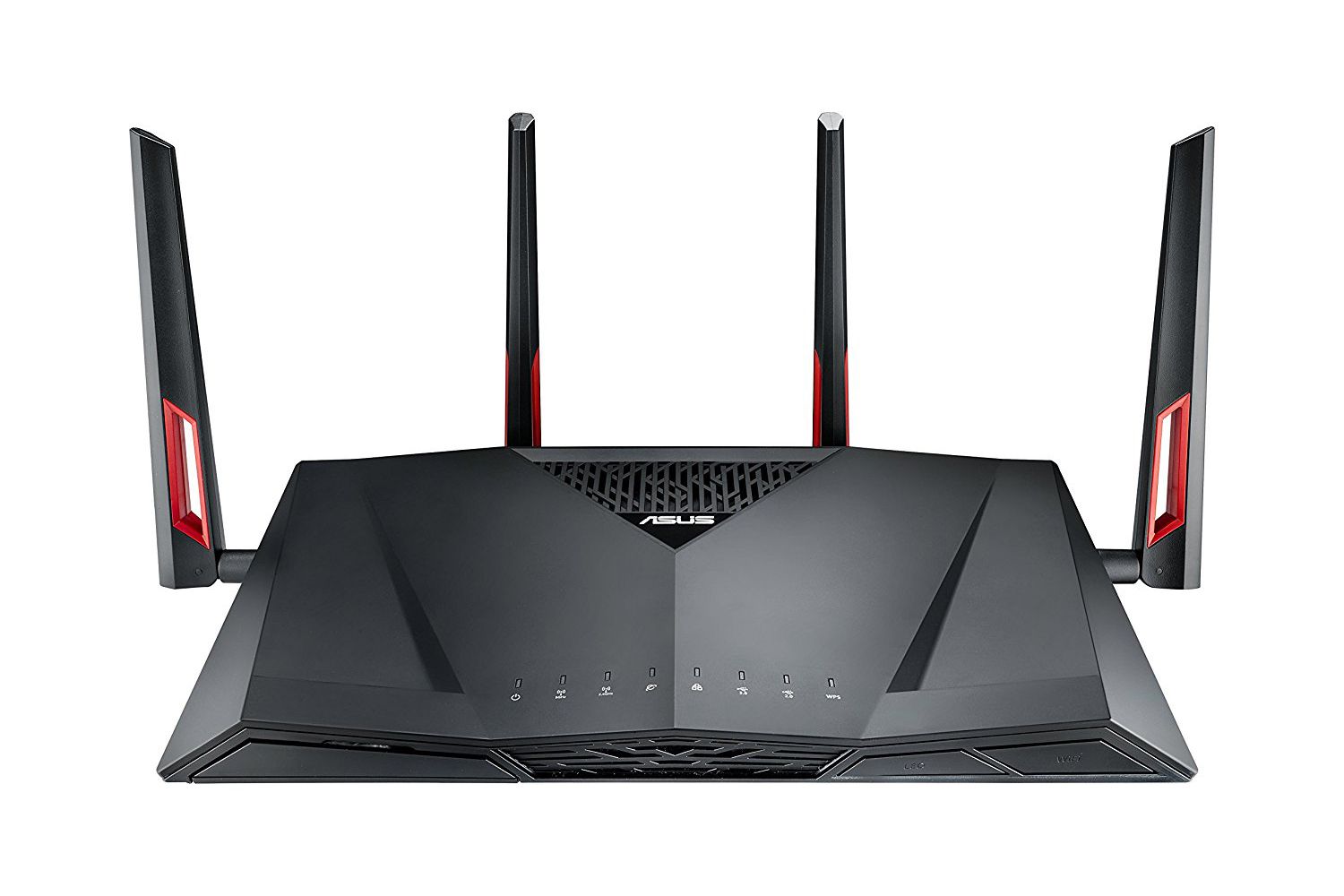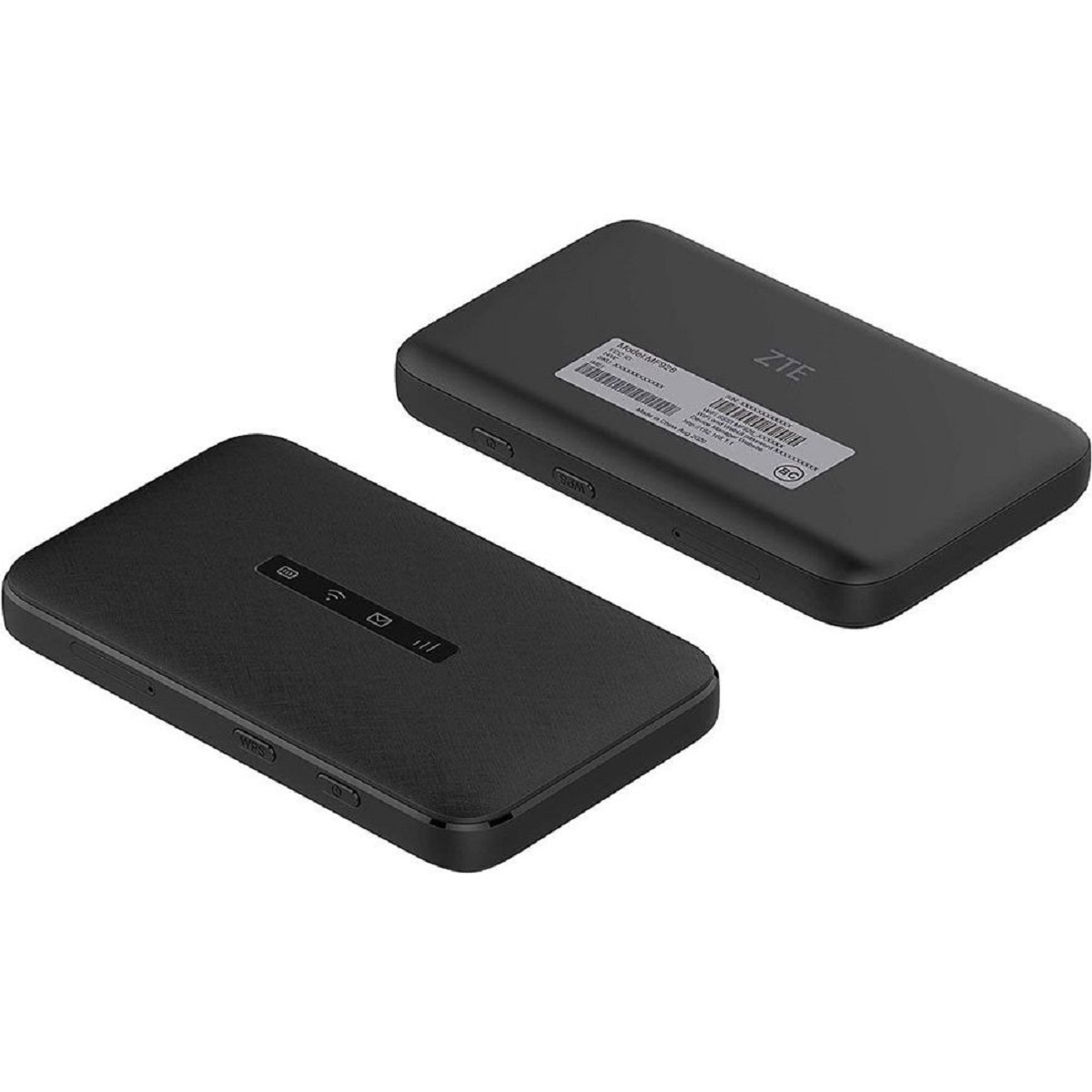Introduction
A wifi router is an essential device in our modern connected world. It enables us to have access to the internet wirelessly, providing convenience and flexibility in our daily lives. However, like any electronic device, wifi routers also have a lifespan. Understanding how long a wifi router lasts and the factors that affect its lifespan can help you make informed decisions when it comes to choosing, maintaining, and replacing your router.
In this article, we will explore the lifespan of a wifi router and the factors that contribute to its longevity. We will also discuss the signs that indicate it may be time to replace your router and provide tips on how to extend its lifespan. So whether you are a tech-savvy individual who wants to optimize your home network or a business owner interested in ensuring reliable wifi for your customers, this article will provide valuable insights.
Before we delve into the specifics, it’s important to note that the lifespan of a wifi router can vary significantly. Some routers may still perform well beyond their expected lifespan, while others may show signs of wear and degradation earlier than anticipated. Several factors influence a router’s lifespan, and understanding these factors can help you make more accurate predictions about your router’s longevity.
The Lifespan of a Wifi Router
The lifespan of a wifi router refers to the average time it remains in optimal working condition before it starts experiencing performance issues or becomes outdated. While there is no specific timeframe that applies to all routers, most routers are designed to last between three to five years. However, it’s important to note that this is not a hard and fast rule, as individual factors can influence the lifespan of a router.
Several factors contribute to the lifespan of a wifi router. One of the primary factors is the quality of the router itself. Higher-quality routers typically have better components and are built to withstand heavy usage. They are designed to last longer and provide more reliable performance. On the other hand, cheaper routers may not be as durable and can experience performance issues sooner.
Another factor that affects a router’s lifespan is the usage and traffic it handles. If you have a busy household or office with multiple devices connected to the router, it may experience higher usage and more data traffic, which can put extra strain on the router. This can potentially lead to faster wear and tear and a shorter lifespan.
The environmental conditions in which a router is placed also play a role in its longevity. Routers that are exposed to extreme temperatures, humidity, or dust may have a shorter lifespan compared to those in a controlled environment. It’s important to ensure that your router is placed in a well-ventilated area and protected from physical hazards.
Additionally, firmware updates also play a crucial role in the performance and lifespan of a wifi router. Manufacturers frequently release firmware updates to address security vulnerabilities, improve performance, and add new features. Regularly updating the firmware ensures that your router remains up to date and can help prolong its lifespan.
By understanding these factors, you can gain insights into the lifespan of your wifi router. However, it’s essential to keep in mind that these are general guidelines, and individual experiences may vary. Monitoring the performance of your router and being aware of the signs that indicate it may need replacement will help you make informed decisions.
Factors That Affect the Lifespan of a Wifi Router
Several factors influence the lifespan of a wifi router. Understanding these factors can help you assess the durability of your router and make informed decisions regarding its maintenance and replacement. Here are some key factors that affect the lifespan of a wifi router:
- Quality of the Router: The quality of the router is a significant determinant of its lifespan. Higher-quality routers are usually built with better components and undergo rigorous testing to ensure durability. They are designed to handle heavy usage and provide reliable performance for a more extended period. On the other hand, cheaper routers may have lower-quality components, making them prone to faster wear and potential failure.
- Usage and Traffic: The usage and amount of data traffic a router handles can impact its lifespan. Routers that constantly have multiple devices connected and handle large data transfers may experience more strain. Continuous heavy usage can lead to increased wear and degradation of the router’s components, potentially shortening its lifespan. Conversely, routers that handle lighter usage may remain in optimal condition for a more extended period.
- Environmental Conditions: The environmental conditions in which a router operates can significantly affect its durability. Exposure to extreme temperatures, moisture, dust, or physical hazards can impact the router’s performance and potentially lead to premature failure. It is important to keep the router in a well-ventilated area, away from excessive heat, humidity, and potential sources of physical damage.
- Firmware Updates: Firmware updates released by the manufacturer play a vital role in a router’s performance and lifespan. These updates address security vulnerabilities, improve the router’s functionality, and enhance its overall performance. Regularly updating the router’s firmware ensures it remains up to date with the latest advancements and can help extend its lifespan.
By taking these factors into consideration, you can better understand the lifespan of your wifi router and make informed decisions about its maintenance and replacement. While the average lifespan of a router may be around three to five years, these factors can either shorten or extend its longevity. Monitoring the performance of your router and addressing any signs of degradation can help ensure reliable connectivity and maximize the lifespan of your wifi router.
Quality of the Router
The quality of the router is a significant factor that directly impacts its lifespan. High-quality routers are built with superior components and undergo stringent testing to ensure durability and long-lasting performance.
When it comes to selecting a router, investing in a high-quality model from a reputable manufacturer is crucial. These routers may come with a higher price tag, but they are designed to handle heavy usage and provide reliable performance for an extended period.
High-quality routers are built to withstand the demands of modern networks, including streaming, gaming, and multiple devices connected simultaneously. They often offer better coverage, faster speeds, and more advanced features compared to lower-quality routers.
On the other hand, cheaper routers tend to have lower-quality components and may not be as robust or reliable. They may not be able to handle intense usage or large data transfers, leading to faster wear and potential failure.
It’s worth noting that the quality of the router also influences its ability to receive and transmit signals effectively. A higher-quality router will have better internal antennas and signal amplification, resulting in improved coverage and reduced signal interference.
In addition to the initial investment in a high-quality router, it’s important to consider the long-term cost-effectiveness. While it may seem tempting to opt for a cheaper router, you may end up needing to replace it sooner due to performance issues or lack of features.
By choosing a high-quality router, you can ensure that it will last longer, provide better performance, and future-proof your network to some extent. It’s a worthwhile investment that can save you from the hassle of frequent replacements and ensure a stable wifi connection for years to come.
Usage and Traffic
The usage and amount of data traffic that a wifi router handles are crucial factors that can impact its lifespan. The more devices connected to the router and the heavier the data traffic, the more strain it will experience, potentially leading to a shorter lifespan.
If you have a busy household or office with multiple devices constantly connected to the router, such as smartphones, tablets, laptops, smart TVs, and gaming consoles, it can put significant strain on the router’s hardware and processing capabilities. This strain can lead to increased wear and tear, affecting the overall performance and longevity of the router.
Additionally, if your network has high data traffic, such as continuous large file transfers, video streaming, online gaming, or video conferencing, it can further burden the router. Handling large amounts of data transfers requires the router’s hardware to work harder, generating more heat and potentially degrading its performance over time.
It’s important to consider the capabilities of your router and ensure it can handle the expected usage and traffic. Some routers are specifically designed for heavy usage and can sustain better performance under demanding conditions. If you know that your network will have high usage and data traffic, investing in a router with advanced features and robust hardware can help extend its lifespan.
Managing the number of connected devices and optimizing network usage can also contribute to prolonging a router’s lifespan. Unnecessary devices connected to the router can put additional strain on the network, so it’s wise to periodically review and remove any unused or unnecessary devices.
Furthermore, implementing quality of service (QoS) settings in your router can help prioritize network traffic, ensuring that critical applications or devices receive the necessary bandwidth while preventing congestion and excessive strain on the router.
By being mindful of the usage and traffic on your network and selecting a router that can handle the anticipated demands, you can help prolong its lifespan and maintain optimal performance for an extended period.
Environmental Conditions
The environmental conditions in which a wifi router operates can have a significant impact on its lifespan. Exposure to extreme temperatures, humidity, dust, and physical hazards can affect the router’s performance and potentially lead to premature failure.
Extreme temperatures can cause stress on the electronic components of the router. High temperatures can accelerate the aging process, leading to degraded performance and shorter lifespan. On the other hand, low temperatures can affect the router’s ability to function optimally. It’s important to place the router in a well-ventilated area, away from direct sunlight and sources of heat or cold.
Humidity is another environmental factor that can affect a router’s longevity. High humidity can cause corrosion and damage to the electronic components, leading to performance issues. It’s advisable to keep the router in a dry environment and avoid exposing it to excess moisture.
Dust and debris can accumulate in the router’s vents and openings over time. This buildup can restrict airflow, leading to overheating and potential damage to internal components. Regularly cleaning the router by gently removing dust can help to mitigate this issue and prolong its lifespan.
Physical hazards, such as accidental bumps or falls, can also impact the router’s durability. Routers are delicate electronic devices, and any physical damage can affect their functionality. It’s important to place the router in a secure location where it is less likely to be accidentally bumped or knocked over.
Additionally, environmental factors outside of your control, such as power outages and voltage fluctuations, can also impact the lifespan of your router. Power surges during lightning storms or sudden spikes in electricity can cause irreparable damage to the router. Using surge protectors or uninterruptible power supply (UPS) devices can provide an extra layer of protection against such events.
By ensuring that your router is placed in a well-ventilated area, protected from extreme temperatures, humidity, dust, and physical hazards, you can help prolong its lifespan and maintain optimal performance.
Firmware Updates
Firmware updates play a crucial role in the performance and lifespan of a wifi router. Firmware is the software that runs on the router’s internal system, controlling its operation and functionality. Manufacturers regularly release firmware updates to address security vulnerabilities, improve performance, and add new features.
Keeping your router’s firmware up to date is essential for ensuring optimal performance and prolonging its lifespan. Firmware updates often include bug fixes, stability improvements, and compatibility enhancements that can enhance the router’s overall functionality.
One of the primary reasons to update the router’s firmware is to address security vulnerabilities. Hackers and cybercriminals constantly look for weaknesses in routers’ firmware to exploit. Manufacturers promptly release firmware updates to patch any identified vulnerabilities, protecting your network from potential security breaches.
Firmware updates can also bring performance improvements to the router. These updates can optimize the router’s processing capabilities, enhance its wireless signal strength and coverage, and improve the stability of the connection. By taking advantage of these updates, you can enjoy better speed, reliability, and overall performance from your router.
In addition to security and performance enhancements, firmware updates often add new features and functionalities to the router. These updates may introduce advanced settings, improved management options, or compatibility with the latest technology standards. By keeping your router’s firmware up to date, you can ensure that you have access to the latest advancements and features.
Updating the firmware of a router is relatively straightforward. Most modern routers have a web interface that allows you to check for and install firmware updates with just a few clicks. Manufacturers often provide instructions and tools to facilitate the update process.
Regularly checking for firmware updates and installing them promptly is essential for maintaining the router’s optimal performance and prolonging its lifespan. Set a reminder to check for updates periodically or enable automatic firmware updates if supported by your router.
By keeping your router’s firmware up to date, you can ensure the best security, performance, and features, thereby maximizing the lifespan of your wifi router.
Signs That Your Wifi Router May Need Replacement
Like any electronic device, wifi routers may eventually reach a point where they need to be replaced. Recognizing the signs that indicate your router may need replacement will help you avoid connectivity issues and ensure a reliable network. Here are some common signs that your wifi router may need replacement:
- Decreased Performance and Speed: If you notice a significant decrease in the performance and speed of your wifi connection, it could be a sign that your router is struggling to handle the demands of your network. Slow loading times, buffer delays, and frequent connection drops are indicators that it may be time for an upgrade.
- Frequent Connectivity Issues: If you frequently experience dropped connections or difficulty connecting to your network, it may indicate that your router is no longer functioning optimally. Constantly having to troubleshoot connectivity problems can be frustrating and may point to the need for a replacement.
- Outdated Features and Technology: Technology advances at a rapid pace, and routers that were once cutting-edge can quickly become outdated. If your current router lacks essential features, such as support for newer wifi standards or advanced security protocols, it may be time to upgrade to a more modern router that can better meet your needs.
- Physical Damages: Physical damages to your router, such as cracks, broken antennas, or water damage, can affect its performance and signal strength. If your router has suffered significant physical damage that cannot be repaired, it may be necessary to replace it with a new one.
It’s important to note that these signs may not always indicate a definitive need for replacement, as certain issues can be resolved through troubleshooting or firmware updates. However, if you have tried troubleshooting and addressing these issues without success, it may be time to consider investing in a new router.
It’s recommended to periodically assess the overall performance and functionality of your router. If you notice a combination of these signs or if your router is approaching the end of its expected lifespan, it may be a good idea to start researching and considering a replacement to avoid future connectivity problems and ensure a reliable network.
Decreased Performance and Speed
If you notice a significant decrease in the performance and speed of your wifi connection, it can be a strong indication that your router may need replacement. Slow loading times, buffering delays, and frequent connection drops are common symptoms of a router that is struggling to handle the demands of your network.
Over time, as technology advances and the number of connected devices in your home or office increases, your router may struggle to keep up with the increased traffic. Older routers, especially those with lower processing power or limited memory, can become overwhelmed and experience degraded performance.
One noticeable sign of decreased performance is a decrease in internet speeds. If you consistently experience slower download and upload speeds, despite having a high-speed internet connection, it could be a result of an outdated or underperforming router. A new router can provide better network throughput, allowing you to enjoy full internet speeds.
Another factor affecting performance is the range and signal strength of your wifi connection. As routers age, their ability to transmit and receive signals can diminish. This can result in weak or spotty coverage, where you may experience dead zones in your home or office. If you find that your wifi signal is weak or inconsistent in certain areas, even when in close proximity to the router, it could be an indication that it’s time to upgrade.
Additionally, the increasing complexity and data-intensive nature of modern applications, such as streaming, online gaming, and video conferencing, can put more strain on your router’s hardware. Older routers may struggle to handle the demands of these applications, resulting in lag, buffering, and degraded performance.
It’s essential to rule out other possible causes of decreased performance before concluding that your router needs replacement. Factors such as internet service provider issues, interference from neighboring networks, or problems with your devices can also impact the overall performance of your wifi connection.
However, if you have already ruled out these other factors and determine that your router is the primary cause of the performance issues, it may be time to invest in a new router. Upgrading to a more capable and modern router can provide improved network performance, faster internet speeds, better coverage, and a smoother experience for all connected devices.
Frequent Connectivity Issues
Frequent connectivity issues, such as dropped connections or difficulty connecting to your wifi network, can be frustrating and disruptive. If you consistently experience these types of issues, it could be a sign that your router is no longer functioning optimally and may need replacement.
One of the possible causes of frequent connectivity issues is outdated firmware. Over time, manufacturers release firmware updates to address bugs, improve stability, and enhance compatibility with new devices and technologies. If you have not updated your router’s firmware for an extended period, it’s possible that compatibility issues or bugs are affecting its performance, resulting in connectivity problems.
However, if you have already updated your router’s firmware and are still experiencing frequent connectivity issues, it’s an indication that the router’s hardware may be deteriorating. The router’s hardware components, such as the wireless antennas or network processor, can wear out over time and become less reliable in establishing and maintaining stable connections.
Another factor to consider is the number of devices connected to your network. Older routers with limited processing power may struggle to handle a large number of connected devices simultaneously. This can lead to congestion and cause frequent connection drops or difficulty connecting to the network. If your router is unable to cope with the growing number of devices in your home or office, it may be time to upgrade to a more capable router.
Interference from neighboring wifi networks can also contribute to frequent connectivity issues. Over time, the number of wifi networks in your area may have increased, leading to overcrowded wireless channels and signal interference. Upgrading to a modern router that supports advanced channel selection and interference avoidance features can help mitigate these issues and provide a more stable connection.
Lastly, it’s important to rule out any issues with your devices or network settings before concluding that your router is the cause of the frequent connectivity problems. Sometimes, incompatible devices, misconfigured network settings, or software-related issues on specific devices can manifest as connectivity issues. Troubleshooting these issues can help determine whether your router is at fault or if there are other factors contributing to the problem.
If you have exhausted all troubleshooting steps and determined that your router is the likely culprit behind the frequent connectivity issues, it is recommended to consider replacing your router. A newer and more advanced router can provide improved connectivity, better range, and enhanced stability, ensuring a seamless and reliable wifi experience for all your devices.
Outdated Features and Technology
As technology advances at a rapid pace, older routers can quickly become outdated, lacking the features and capabilities necessary to keep up with modern networking demands. If your router is no longer equipped with the latest features and technologies, it may be time to consider upgrading to a more up-to-date model.
One of the key areas where outdated routers may fall short is in their support for newer wifi standards. Wifi standards, such as 802.11n, 802.11ac, and now the latest 802.11ax (Wi-Fi 6), continue to evolve and offer improvements in speed, range, and capacity. If your router only supports older wifi standards, you may experience slower speeds and limited coverage compared to more modern routers.
Moreover, newer wifi standards come with advancements in technology, including features like beamforming, which improves signal directionality, and multi-user MIMO (MU-MIMO), which enables simultaneous data transmission to multiple devices. These features result in better performance, reduced interference, and improved overall wifi experience. If your router lacks support for these features, you may not be getting the full benefits of your internet connection.
Outdated routers may also lack essential security features that are crucial in today’s digital landscape. Modern routers often offer advanced security protocols, such as WPA3 encryption, which provides improved protection against unauthorized access and data breaches. If your router only supports older and less secure security protocols, it leaves your network more vulnerable to potential threats.
Technological advancements have also brought about new and innovative features that enhance network management and user experience. Newer routers often offer intuitive user interfaces, mobile apps for easy configuration, and the ability to prioritize specific devices or applications for optimized performance. If you find yourself missing out on these advanced features, it may be a sign that your router is outdated.
Upgrading to a router with the latest features and technology can provide a range of benefits, including faster and more reliable speeds, better coverage, enhanced security, and improved network management. It allows you to take advantage of the latest advancements in wifi technology, future-proofing your network and ensuring optimal performance for years to come.
Physical Damages
Physical damages to your wifi router can significantly affect its performance and signal strength. If your router has sustained physical damage, such as cracks, broken antennas, or water damage, it might be time to consider replacing it.
A cracked or damaged router casing can expose sensitive internal components to dust, debris, and even moisture, potentially leading to further damage. Additionally, physical damages can disrupt the internal electrical connections, causing signal loss or intermittent connectivity issues.
Broken or damaged antennas can result in reduced signal strength and coverage. Antennas play a vital role in transmitting and receiving wifi signals, and any damage to them can affect the router’s ability to provide a strong and stable connection. If you notice a significant drop in wifi range or weak signal in certain areas, it could be due to damaged antennas.
Water damage is particularly detrimental to routers. Exposure to moisture can corrode electrical components and compromise the router’s functionality. If your router has come into contact with water, whether through spills, leaks, or environmental conditions, it’s likely that it has suffered internal damage that may affect its performance and lifespan.
In some cases, physical damages to the router may be repairable. However, repairs can be costly, and it is often more cost-effective to replace the router, especially if it is an older model or already showing signs of aging.
It’s crucial to handle and position the router with care to minimize the risk of physical damages. Keeping the router in a secure location away from areas where it is vulnerable to accidents or mishaps is important.
If you notice any physical damages that could compromise your router’s performance, it’s recommended to consult with a professional or the manufacturer’s support team for guidance. They can assess the extent of the damage and provide recommendations on whether repairing or replacing the router is the best course of action.
Replacing a damaged router ensures that you have a reliable and fully functional device. It allows you to avoid potential performance issues, eliminate the risk of further damage, and maintain a stable wifi connection for all your devices.
How to Extend the Lifespan of Your Wifi Router
Prolonging the lifespan of your wifi router is essential for maintaining a reliable and efficient network. Here are some tips to help you extend the lifespan of your router:
- Choose a High-Quality Router: Investing in a high-quality router from a reputable manufacturer is one of the best ways to ensure longevity. High-quality routers are built with superior components and are designed to handle heavy usage. They are more likely to withstand wear and tear, providing reliable performance over an extended period.
- Keep the Router Firmware Updated: Regularly updating your router’s firmware is crucial for optimal performance and security. Manufacturers release firmware updates to address vulnerabilities, improve stability, and introduce new features. Keeping your router firmware up to date ensures that it can handle the latest network demands and reduces the risk of security breaches.
- Optimize Router Placement: The placement of your router can greatly affect its performance and range. Position the router in a central location, away from obstructions such as walls or furniture that can block the signal. Elevating the router off the ground can also help improve signal coverage. Experiment with router placement to find the optimal position for maximum coverage and signal strength.
- Protect the Router from Power Surges: Power surges caused by electrical storms or fluctuations can damage the electronic components of your router. To protect your router, use surge protectors or uninterruptible power supply (UPS) devices. These devices help absorb excessive voltage and protect your router from potential damage.
- Regularly Clean and Maintain the Router: Dust and debris can accumulate in the vents and openings of your router, obstructing airflow and causing overheating. Regularly cleaning the router by gently removing dust can help prevent overheating and extend its lifespan. Pay attention to the antennas as well, ensuring they are not bent or damaged.
These simple steps can go a long way in maintaining the performance and longevity of your wifi router. By selecting a high-quality router, keeping the firmware updated, optimizing router placement, protecting from power surges, and regularly cleaning and maintaining the router, you can ensure reliable and efficient network connectivity for an extended period.
Choose a High-Quality Router
When it comes to extending the lifespan of your wifi router, one of the most important factors to consider is the quality of the router itself. Investing in a high-quality router from a reputable manufacturer can significantly contribute to its longevity and overall performance.
High-quality routers are built with superior components and undergo rigorous testing to ensure durability and reliability. They are engineered to handle heavy usage and provide consistent performance over an extended period.
When selecting a router, it’s essential to consider factors such as processing power, memory capacity, and wireless capabilities. Higher quality routers often offer more advanced features, better signal strength, and enhanced coverage compared to lower-quality options.
While high-quality routers may come with a higher price tag, they are a worthwhile investment in the long run. Cheaper routers might appear tempting initially, but they may lack the durability or processing power required to handle the demands of modern networks.
By investing in a high-quality router, you are not only extending its lifespan but also ensuring better performance and improved network stability. These routers are designed to handle the growing number of connected devices in our homes and offices, as well as data-intensive activities like streaming, gaming, and video conferencing.
In addition to the initial investment, high-quality routers often come with better customer support and firmware updates. Manufacturers of reputable routers regularly release firmware updates to improve security, fix bugs, and enhance features. Keeping your router’s firmware up to date is crucial for optimal performance and security.
When researching routers, read reviews, compare specifications, and look for routers that have a good track record of reliability and positive customer feedback. It’s also helpful to consider routers that are compliant with the latest wifi standards, such as 802.11ac or 802.11ax (Wi-Fi 6), to ensure compatibility with future devices and technologies.
By choosing a high-quality router, you are not only investing in a reliable device but also in the longevity and performance of your network. It’s a wise decision that can save you from frequent replacements, provide a better user experience, and future-proof your network as technology continues to advance.
Keep the Router Firmware Updated
Maintaining the updated firmware of your wifi router is vital for its optimal performance, security, and longevity. Firmware updates released by router manufacturers address vulnerabilities, improve stability, and introduce new features.
Outdated firmware can lead to performance issues and leave your network vulnerable to security threats. Manufacturers constantly work on identifying and patching vulnerabilities in their routers’ firmware. By keeping your router’s firmware up to date, you ensure that your router is equipped with the latest security measures to protect against potential breaches.
Firmware updates also provide performance enhancements. Manufacturers often release updates to optimize the router’s processing capabilities, wireless signal strength, and overall functionality. These updates can result in faster speeds, better coverage, and improved reliability for your network.
Updating the firmware of your router is typically a straightforward process. Most modern routers have a user-friendly interface that allows you to check for available updates and install them with a few clicks. Some routers even support automatic updates, ensuring that your router always has the latest firmware installed.
It’s essential to set a routine to check for firmware updates regularly. Firmware updates may be released periodically, and staying on top of these updates ensures that your router remains up to date in terms of performance and security.
When updating the firmware, it’s essential to follow the manufacturer’s instructions carefully. During the update process, avoid interrupting the power or disconnecting the router to prevent potential firmware corruption or damage.
Keeping the firmware updated doesn’t just benefit the router itself but also ensures compatibility with new devices and technology standards. As technology advances, firmware updates may introduce support for newer wifi standards, such as 802.11ac or 802.11ax (Wi-Fi 6), which can improve your network’s performance and compatibility with the latest devices.
Regularly checking for and installing firmware updates can significantly extend the lifespan of your router. With each update, you enhance the router’s security, stability, and performance, ensuring a reliable and efficient network for all your connected devices.
Optimize Router Placement
The placement of your wifi router plays a crucial role in its performance and range. Optimizing the placement of your router can significantly extend its lifespan and ensure optimal connectivity throughout your home or office.
Firstly, consider placing your router in a central location within your space. This allows the wifi signal to reach all areas more effectively. Avoid placing the router near walls, corners, or in enclosed spaces, as this can hinder the signal from propagating outward.
Obstructions such as walls, furniture, or electronic appliances can weaken the wifi signal. It’s important to position the router away from these obstructions to minimize signal interference. Additionally, keep the router elevated off the ground to avoid signal degradation caused by interference from floors or carpets.
Experimenting with different router orientations can also help optimize signal strength. Some routers have adjustable antennas, allowing you to position them vertically or horizontally. Try different orientations and observe the impact on signal strength and coverage to find the best configuration for your specific environment.
If you have a multi-story home or office, consider placing the router on the upper floor to improve signal coverage on both levels. Wi-Fi signals tend to propagate downward more effectively than upward, so placing the router on an upper floor can help maximize signal reach.
Using wifi range extenders or access points strategically placed throughout your space can also help extend the coverage area of your wifi network. These devices can amplify the signal and provide a stronger connection in areas that are far from the main router.
It’s worth noting that the wifi signal’s strength diminishes as you move farther away from the router. If you have specific areas with weak signal coverage, you can experiment with the router’s position or consider using a mesh wifi system to ensure a more consistent and reliable signal throughout your entire space.
Regularly evaluating and optimizing the placement of your router can help extend its lifespan by ensuring better signal strength, coverage, and overall network performance. By maximizing the reach and quality of the wifi signal, you can enjoy a more seamless and reliable connection on all your devices.
Protect the Router from Power Surges
Power surges caused by electrical storms or fluctuating voltages can pose a significant risk to your wifi router. These surges can damage the electronic components of your router, leading to malfunctions and potentially shortening its lifespan. To protect your router from power surges, it’s crucial to take preventive measures.
One effective way to safeguard your router is by using a surge protector. A surge protector is a device designed to absorb and redirect excessive voltage away from connected devices, preventing damage from power spikes. It acts as a buffer between the power source and your router, ensuring that any sudden surge in electricity does not reach and harm the device.
When purchasing a surge protector, ensure that it provides sufficient joule rating and features surge protection for both power outlets and network connections. Look for surge protectors that carry reputable certifications, such as UL (Underwriters Laboratories) or CSA (Canadian Standards Association), to ensure their reliability and safety.
Another option to consider is using an uninterruptible power supply (UPS) device. A UPS acts as a battery backup system, providing power to your router during power outages and regulating the voltage to prevent surges. This gives you ample time to safely shut down your devices and protects them from sudden power disruptions or surges that can occur during power restoration.
Proper grounding of your electrical system can also help protect your router from power surges. Ensuring that your home or office’s electrical system is properly grounded provides an additional layer of protection against electrical abnormalities.
In addition to these preventive measures, it’s important to unplug your router during severe electrical storms or when you expect extended periods of power outages. This helps eliminate the risk of power surges reaching your router while it’s vulnerable.
Remember that power surges can also occur internally within your home or office, such as when large appliances or devices with motors turn on or off. To minimize the risk, avoid plugging high-power devices or appliances directly into the same outlet as your router.
By taking proactive steps to protect your router from power surges, you can significantly extend its lifespan and ensure uninterrupted network connectivity. Surge protectors, UPS devices, and practicing caution during electrical storms are fundamental measures that safeguard your router from potential damage caused by power fluctuations.
Regularly Clean and Maintain the Router
Regularly cleaning and maintaining your wifi router is essential for ensuring optimal performance and extending its lifespan. Dust, debris, and other contaminants can accumulate over time, obstructing airflow and leading to overheating and reduced performance. Implementing a regular cleaning and maintenance routine will help keep your router functioning at its best.
Start by turning off and unplugging the router from the power source before cleaning. Using a soft, dry cloth, gently wipe the exterior surfaces of the router to remove dust and smudges. Pay special attention to the vents and openings, as these areas are prone to dust accumulation.
For more thorough cleaning, use a can of compressed air or a small brush to remove dust from the crevices, vents, and other hard-to-reach areas. Be careful not to apply too much pressure or use any abrasive materials that could damage the router.
Antennas play a critical role in transmitting and receiving wifi signals. Ensure that the antenna connectors are secure and not loose. If your router has detachable antennas, you can remove them and clean them separately using a soft cloth or brush.
In addition to cleaning the exterior, it’s essential to keep the interior of the router free from dust and debris. However, it’s crucial to note that opening the router can void the warranty and should only be done if you have the necessary expertise. If you suspect that the router’s interior needs cleaning, it’s best to consult the manufacturer’s guidelines or contact their support for assistance.
Aside from regular cleaning, keeping the firmware of your router up to date is another important maintenance task. Manufacturers release firmware updates to address security vulnerabilities, improve stability, and introduce new features. Staying current with these updates ensures that your router operates optimally and securely.
Monitoring the temperature of your router is also part of maintenance. Overheating can negatively impact the router’s performance and lifespan. Ensure that the router is placed in a well-ventilated area and not exposed to excessive heat sources. If you notice that the router is consistently running hot, consider using a cooling pad or placing a small fan nearby to improve airflow.
Regularly reviewing your router’s logs and usage statistics can help identify any abnormalities or potential issues. These logs can provide insights into the router’s operation and alert you to any unusual patterns that may require further investigation or troubleshooting.
By maintaining a regular cleaning and maintenance routine, you can prevent dust buildup, improve airflow, and extend the lifespan of your wifi router. It ensures consistent performance, enhances reliability, and allows for a smoother and more reliable network experience.
When to Upgrade to a New Wifi Router
Knowing when to upgrade to a new wifi router can ensure you have a reliable and efficient network. While wifi routers are designed to last several years, there are certain signs that indicate it may be time for an upgrade:
- Performance and Speed: If you consistently experience slow speeds, frequent buffering, or a noticeable decrease in performance, it may be a sign that your current router is struggling to keep up with the demands of your network. Upgrading to a newer router with better processing power and advanced features can provide faster speeds and improved performance.
- Outdated Technology: If your current router lacks support for newer wifi standards, such as 802.11ac or 802.11ax (Wi-Fi 6), it may be time to upgrade. Newer wifi standards offer faster speeds, better range, and improved network capacity. Upgrading to a router with the latest technology ensures compatibility with modern devices and helps future-proof your network.
- Growing Number of Connected Devices: If the number of devices in your home or office has increased since you initially set up your network, your current router may struggle to handle the increased traffic. Upgrading to a more powerful router with enhanced capacity can ensure smooth connectivity for all your devices.
- Security Concerns: If your current router is no longer receiving firmware updates or lacks advanced security features, it may be time to upgrade. As technology evolves, so do security threats. Upgrading to a router with the latest security enhancements, such as support for WPA3 encryption, helps protect your network and connected devices from potential vulnerabilities.
- Physical Damages or Aging: If your router has suffered physical damages, such as cracks, broken antennas, or water damage, it may affect its performance and lifespan. Additionally, if your router is several years old and frequently experiences issues, it could be a sign of general wear and tear. In such cases, it may be more cost-effective to replace the router rather than investing in repairs.
Consider these factors and evaluate the overall performance and capabilities of your current router. If you experience any of these signs or if your router is reaching the end of its expected lifespan, upgrading to a new wifi router can provide a more reliable, faster, and secure network for your home or office.
Conclusion
Understanding the lifespan of a wifi router and the factors that influence its longevity is crucial for maintaining a reliable and efficient network. While the average lifespan of a router can vary, there are steps you can take to extend its lifespan and ensure optimal performance.
Choosing a high-quality router from a reputable manufacturer is a solid starting point. These routers are built with superior components and are designed to handle heavy usage, providing reliable performance over an extended period.
Regularly updating the firmware of your router is essential for security, stability, and performance. Firmware updates address vulnerabilities, introduce new features, and optimize the router’s overall functionality. Keeping your router up to date ensures that it can handle evolving network demands and provides a secure connection for your devices.
Optimizing the placement of your router helps maximize signal strength and coverage. Positioning the router in a central location and away from obstructions enhances the wifi signal’s reach and reduces the likelihood of dead spots in your space. Additionally, protecting your router from power surges with surge protectors or UPS devices prevents potential damage to the electronic components.
Regularly cleaning and maintaining your router is vital for preventing dust buildup, improving airflow, and reducing the risk of overheating. By implementing a regular cleaning routine, you can extend the lifespan of your router and ensure optimal performance.
Knowing when to upgrade to a new router is also important. If you experience a significant decrease in performance, outdated technology, a growing number of connected devices, security concerns, or physical damages, it may be time to invest in a new router that better suits your network needs.
By following these guidelines and staying aware of the signs that indicate the need for an upgrade or maintenance, you can ensure that your wifi router remains reliable, providing seamless connectivity and meeting the demands of your connected world.

























